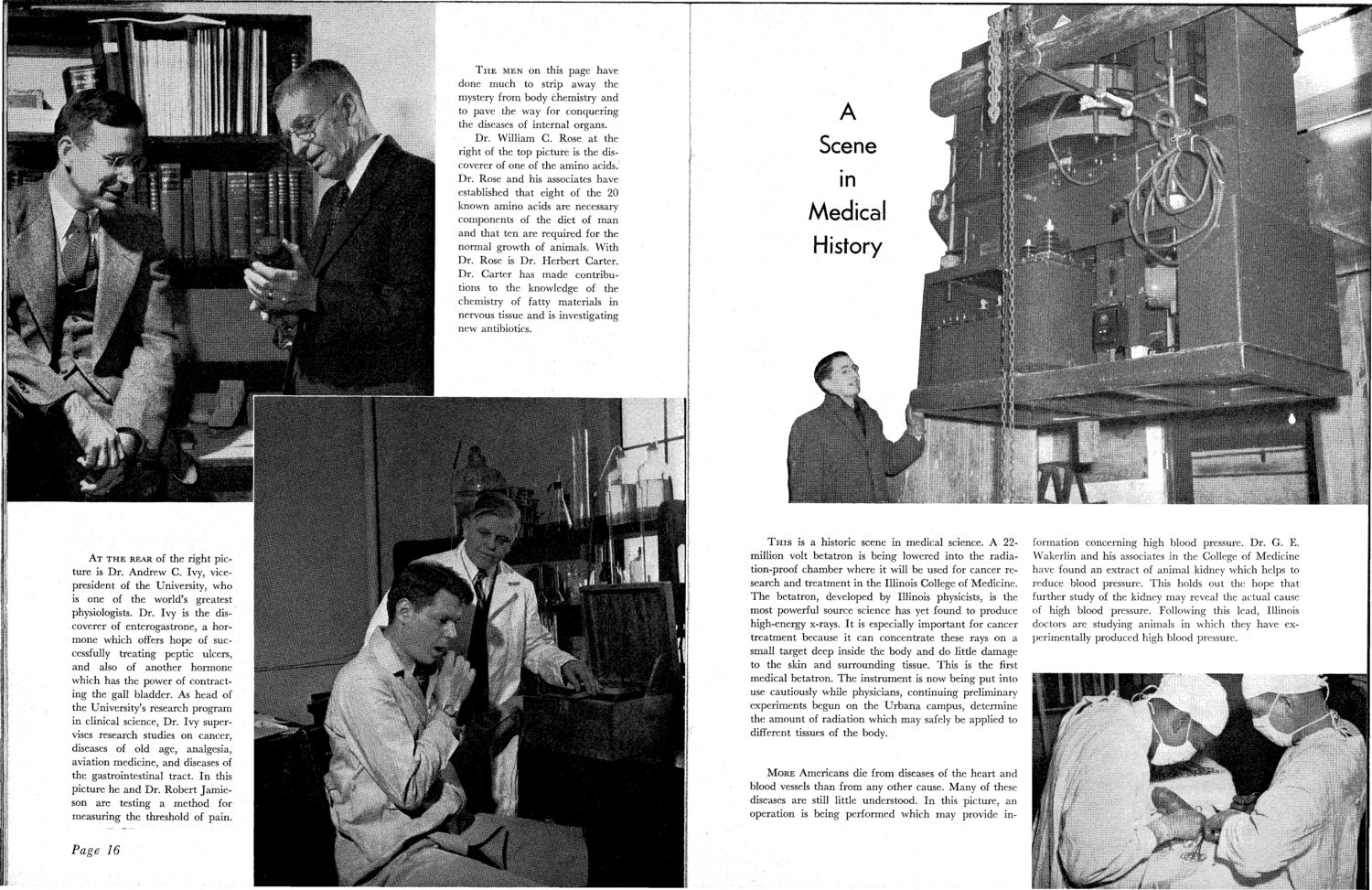Caption: Book - Research on Campus (1949)
This is a reduced-resolution page image for fast online browsing.

EXTRACTED TEXT FROM PAGE:
T H E MEN on this page have done much to strip away the mystery from body chemistry and to pave the way for conquering the diseases of internal organs. Dr. William C. Rose at the right of the top picture is the discoverer of one of the amino acids. Dr. Rose and his associates have established that eight of the 20 known amino acids are necessary components of the diet of man and that ten are required for the normal growth of animals. With Dr. Rose is Dr. Herbert Carter. Dr. Carter has made contributions to the knowledge of the chemistry of fatty materials in nervous tissue and is investigating new antibiotics. A T T H E REAR of the right picture is Dr. Andrew C. Ivy, vicepresident of the University, who is one of the world's greatest physiologists. Dr. Ivy is the discoverer of entcrogastrone, a hormone which offers hope of successfully treating peptic ulcers, and also of another hormone which has the power of contracting the gall bladder. As head of the University's research program in clinical science, Dr. Ivy supervises research studies on cancer, diseases of old age, analgesia, aviation medicine, and diseases of the gastrointestinal tract. I n this picture he and Dr. Robert Jamieson are testing a method for measuring the threshold of pain. T H I S is a historic scene in medical science. A 22million volt betatron is being lowered into the radiation-proof chamber where it will be used for cancer research and treatment in the Illinois College of Medicine. T h e betatron, developed by Illinois physicists, is the most powerful source science has yet found to produce high-energy x-rays. It is especially important for cancer treatment because it can concentrate these rays on a small target deep inside the body and do little damage to the skin and surrounding tissue. This is the first medical betatron. T h e instrument is now being put into use cautiously while physicians, continuing preliminary experiments begun on the U r b a n a campus, determine the amount of radiation which may safely be applied to different tissues of the body. formation concerning high blood pressure. Dr. G. E. Wakerlin and his associates in the College of Medicine have found an extract of animal kidney which helps to reduce blood pressure. This holds out the hope that further study of the kidney may reveal the actual cause of high blood pressure. Following this lead, Illinois doctors are studying animals in which they have experimentally produced high blood pressure. M O R E Americans die from diseases of the heart and blood vessels than from any other cause. Many of these diseases are still little understood. In this picture, an operation is being performed which may provide in- Page 16
|